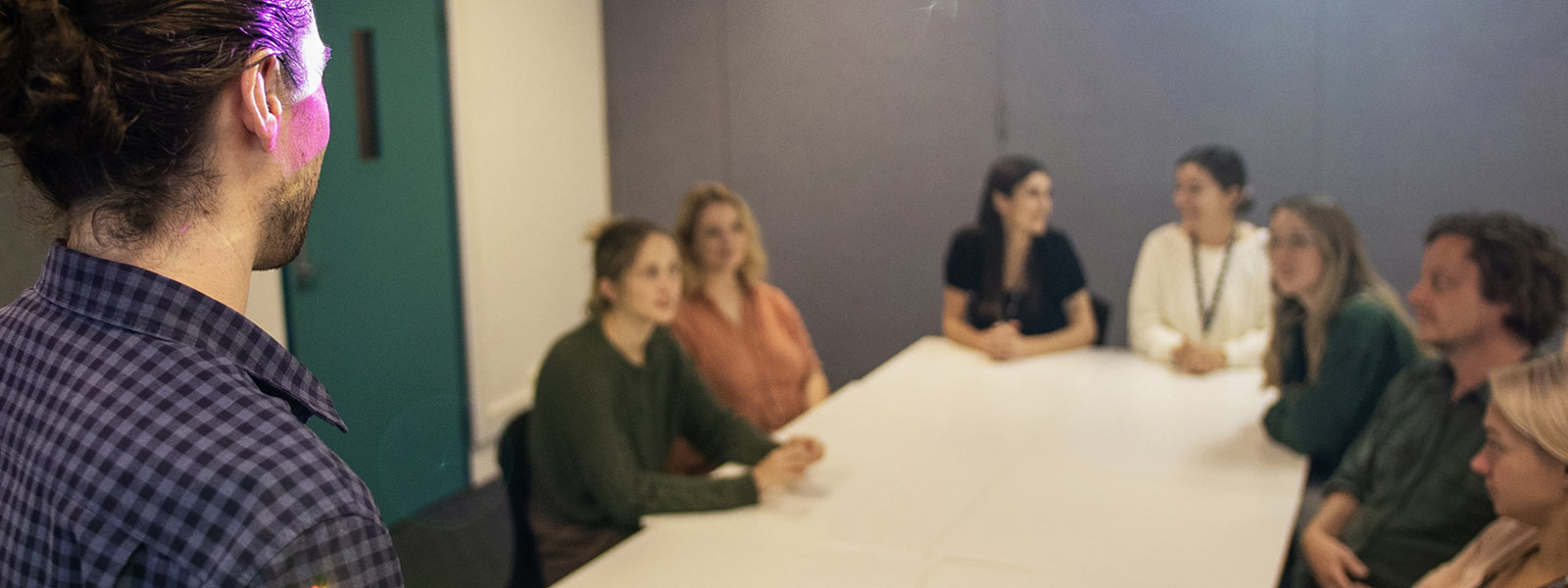Discussion groups are an excellent method for engaging students in active learning and reinforcing course material. There are several creative techniques for facilitating effective discussion groups. The following activities can be used in online or face to face discussion. You may need to adapt your approach to suit online or asynchronous delivery. and are.
LDTI have provided these suggestions to get you started and are available to help you find or refine more discipline-specific techniques.
Introductory activities
These are intended to help get the conversation started. Use other techniques for more in-depth discussion.
Topic-icebreakers
At the beginning of the discussion, ask a relevant and provocative question that can be readily answered. Ask each student for a brief response to the question.
Polls and Quizzes
Facilitator asks a series of questions to the students who respond with a show of hands or using polling tools such as in Zoom or PollEverywhere where results can be shared back to the group immediately. When used at the beginning of class this technique can determine what students already know about a topic or spark interest with provocative questions. At the end of class, you can ask students what they did not understand, where confusion exists or to gauge their level of knowledge on the subject material.
Continuum or Value Line
Ask students to line up according to their understanding/ experience/ intensity/ feeling/experience/confidence of the question or topic posed. Follow-up by hearing back from each student.
In-depth discussion techniques
These follow well after introductory activities and are designed to help structure a discussion and involve every student.
Buzz Groups
Students in groups of 2 or 3 discuss a topic question. Then a spokesperson from each group reports back to the larger group.
Brainstorming
Create a focus question or topic for brainstorming. The question or topic needs to be broad enough to give opportunities for answers but not too broad.
Make it relevant. Students provide input but no analysis or critique is allowed. Write suggestions on board.
Stop the exercise when input flags. Sorting and analysis takes place only after brainstorming is finished.
Round Table
Every student is asked to respond to a question. Give students a few minutes to think, have them write down their responses, and then begin roundtable. Start at one end or side of room and work your way around so that no one is missed. Give students the option of a pass, so that no one is embarrassed by not having an answer.
Debates
Divide class into two teams. Assign a role or perspective to each team. Each student on the team presents for a few minutes from that perspective only. Then switch.
Posters
In small groups, students prepare posters that show their ideas, response or suggestions. Posters can be used to find out where students misunderstand the course material.
Think-Pair-Share
Each student jots down their ideas in response to a posed question. In pairs, students exchange ideas. Lastly, these thoughts are shared with the larger group. Variation–students could present each other’s ideas to the group of students or could combine their ideas into a unified answer.
Mind Mapping
For this exercise butchers paper or a white board is needed as well as markers. A question or topic is written in the middle of paper or board. Students working individually or in teams, write comments, ideas, or responses that are linked to the main topic. Additional comments build on these or start new threads. Responses can be linked with other related ones and new ideas added on from others or from original. Mind mapping creates a visual record of a discussion that includes the links made between ideas.
Fish Bowl
One group of students sits in a small circle discussing a topic. An outer ring of students observes [without any discussion] the interactions of the group in the centre.
This is a useful technique for observing group behaviour.
Circle of Voices
Students (in groups of 4 to 5) take turns speaking for 1-3 minutes on an assigned topic. While each student speaks, no interruptions, questions or comments are
allowed. After each group member has spoken, open the floor for general discussion but do not allow any new ideas to be introduced. The purpose of this technique is to encourage active listening and to focus the discussion.
Jigsaw
Groups are assigned a multi-faceted problem. Each member of the group then selects or is assigned a particular aspect of the problem on which to focus. Next, students move into expert groups that consist of students who are responsible for mastering the same material. In these expert groups, the students ensure that they understand their portion of the material and also know how they will teach it to their original group members. Students then regroup into their original groups, and each student teaches his or her material to the others. Individual mastery of the entire topic can be evaluated through quizzes.
Questions/Discussion
Students present ideas in the form of a question [but avoid “Don’t you think, xyz is true?” questions]. Nobody makes any statement or comment of fact. This is a tricky one to get used to but can be extremely effective in drawing out shy students or making the routine discussion group more fun.
Summary
Rather than you summing up the discussion, get the class involved! Have students take turns providing the summary and connections for the discussion. You can also get student summaries from the whole class by asking questions that encourage a summary of the material, probing students to make connections, or simply by having each student state the most important point they made to the discussion in 5 seconds or less.

